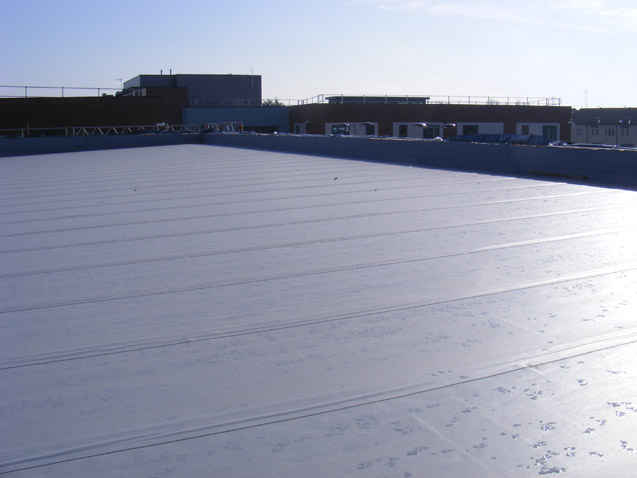Regarding commercial roofing, two popular options are single-ply roofing and built-up roofing (BUR). Each has its strengths and advantages, making it essential for property owners and managers to understand the differences between these systems. This blog will compare single-ply and built-up roofing to help you choose the most suitable roofing system for your commercial property.
Understanding Single-Ply Roofing: Lightweight and Versatile
Single-ply roofing systems consist of a single layer of synthetic or rubber-like material, either mechanically fastened or adhered to the roof substrate. These materials are designed to be lightweight, flexible, and easy to install. Single-ply roofing membranes come in two main types: Thermoplastic Polyolefin (TPO) and Ethylene Propylene Diene Monomer (EPDM).
Examining Built-Up Roofing (BUR): Time-Tested and Durable
Built-up, tar, and gravel roofing is a traditional and time-tested system. It comprises multiple roofing felts or ply sheets, alternating with asphalt or coal-tar bitumen layers. The top layer is typically finished with gravel or mineral granules to protect against UV rays and weathering.
Installation: Single-Ply’s Simplicity vs. BUR’s Complexity
One of the significant differences between single-ply and built-up roofing is the installation process. Single-ply roofing is generally faster and less complex, as it involves the installation of a single layer of membrane. On the other hand, built-up roofing requires the careful layering and bonding of multiple materials, which can be more time-consuming and labor-intensive.
Performance and Durability: Single-Ply’s Modern Advancements vs. BUR’s Time-Tested Strength
Single-ply and built-up roofing systems offer excellent durability but have different characteristics. Single-ply roofing membranes, especially TPO and EPDM, have advanced over the years, offering enhanced resistance to UV rays, chemicals, and punctures. Built-up roofing, however, has a proven track record of withstanding harsh weather conditions and providing long-lasting protection.
Energy Efficiency: Single-Ply’s Reflectivity Vs. BUR’s Thermal Mass
Energy efficiency is a crucial consideration for commercial roofing systems. Single-ply roofing, mainly white TPO membranes, have high reflectivity, reflecting sunlight and reducing heat absorption. This leads to lower cooling costs during hot months. On the other hand, built-up roofing’s multiple layers create a thermal mass that provides insulation and helps maintain stable indoor temperatures.
Maintenance and Repairs: Ease of Single-Ply Vs. Repairability of BUR
In terms of maintenance, single-ply roofing systems are relatively easy to maintain due to their single-layer design. Damaged sections can be repaired or replaced with minimal disruption. Built-up roofing requires more complex repairs, as locating the source of leaks and damage among the layers can be challenging.
Cost Considerations: Balancing Upfront Investment and Long-Term Value
Cost is a significant factor when choosing a roofing system. Single-ply roofing systems have a lower upfront cost than built-up roofing. However, built-up roofing’s long lifespan and durability may offer better long-term value, especially in harsh climates or environments with heavy foot traffic.
Choosing between single-ply and built-up roofing depends on various factors, including installation complexity, performance characteristics, energy efficiency, maintenance needs, and cost considerations. Both systems offer unique advantages, making them suitable for commercial roofing applications. Consulting with a professional roofing contractor is essential to assess your property’s specific needs and make an informed decision that provides optimal protection and long-lasting value for your commercial building.


